
Nine of the best places to see the night sky in Asia-Pacific – secluded stargazing spots, from island resorts to backcountry camps
- Some of the darkest skies on Earth are in Asia and Australasia, from Mauritius and the Maldives to China, Thailand, Japan, New Zealand and Australia
- At resorts and in remote tented camps, telescopes are on hand, often with experts to guide you across the Milky Way and show you how to photograph the stars
Have you been looking up during lockdown? Or maybe it’s been years since you stood transfixed by a starry sky.
Asia has a reputation for being domed in neon lights, but in its remote corners, and in the wider Asia-Pacific region, there exists plenty of true darkness at night.
Sure, Hong Kong and coastal China are heavily light-polluted, but check a light pollution map such as darksitefinder.com and you’ll discover that the Himalayas, northern Thailand and Laos, much of rural China – and particularly Western Australia, New Zealand, the Maldives and any other islands you care to name – have some of the darkest skies left on the planet.
Post-pandemic travel is at last beginning to look possible, with the Hong Kong government having relaxed re-entry conditions slightly from Monday, and a future visit to any of the following hotels or resorts in the week before a new moon should guarantee truly dark skies and a sight of the Milky Way.
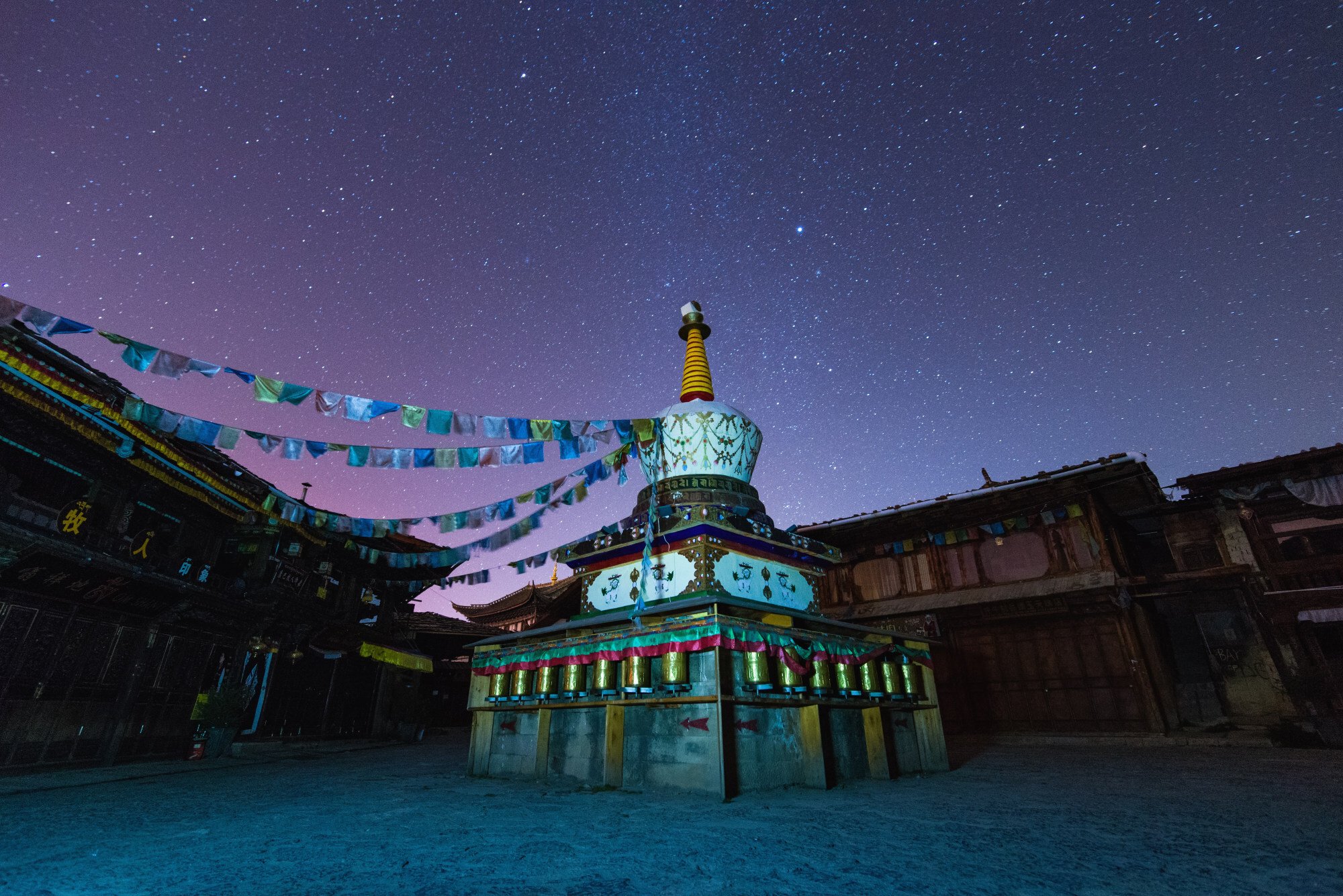
1. Shangri-La City, Yunnan, China
Its coasts may be light-polluted, but a country as vast as China obviously has some excellent places in which to go stargazing. In a remote northwestern corner of Yunnan province in the country’s southwest is Shangri-La City, in the Diqing Tibetan autonomous prefecture.
It's the dizzying altitude that makes the night skies here clear and the stars brighter; at around 3,200 metres (10,500ft) altitude it’s well above the hottest, blurriest part of Earth’s atmosphere and consequently the stars don’t twinkle, they glow. In a region of mountains, gorges, forests and grasslands you can even go stargazing from the grounds of the Shangri-La Resort in Shangri-La City.
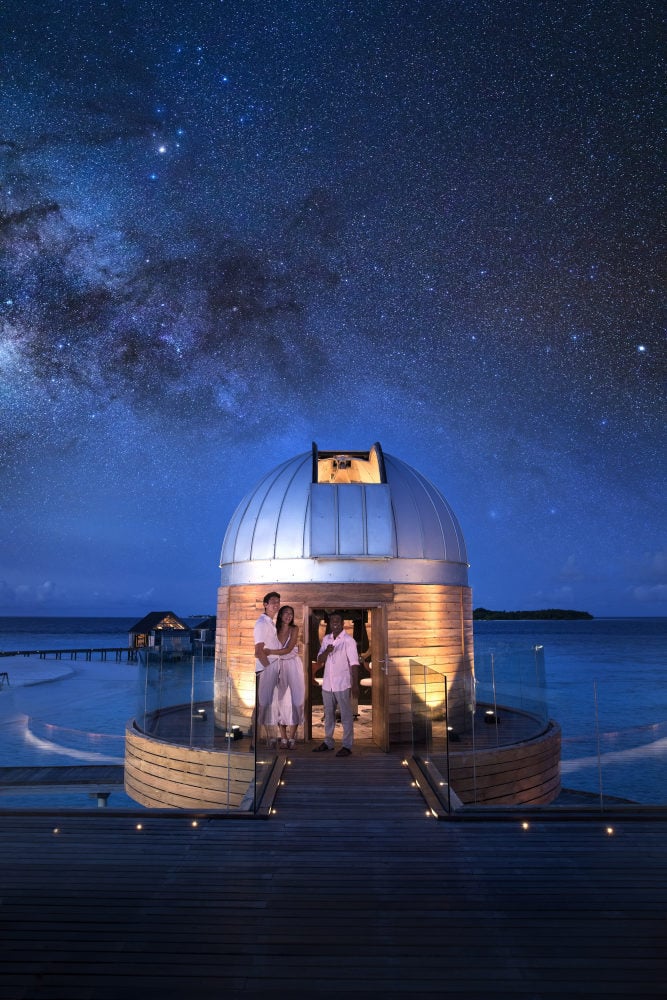
2. Anantara Kihavah, Maldives
How often do you find yourself sipping a space-themed cocktail in a bar with a research-grade telescope above it? The Anantara Kihavah Maldives Villas Resort boasts Sky, the first and only overwater dome observatory in the Maldives.
A stargazing session costs from US$95, during which native Maldivian and resident professional astronomer Ali Shameem will share with you his mighty 16-inch Meade LX200 telescope and passion for the night sky.
Once you’ve seen the stars you can walk downstairs to the Sky Bar and relax with a “Buzz”, a “Hitchhiker” or a “Circle of the Sun” cocktail.
By day you can snorkel with manta rays and swim with dolphins and whale sharks.

3. Paradise Cove Boutique Hotel, Mauritius
The world may have turned upside down in the past year, but you can watch the stars do that anytime you want by heading south of the equator. From this 75-room boutique hotel on the north coast of Mauritius, at Anse la Rai, you’ll see familiar constellations such as Orion, the Big Dipper and Cassiopeia drift across the sky the other way up.
A member of Small Luxury Hotels of the World, Paradise Cove offers a “You & Me” session from 9pm to 10pm each Monday with an astronomer. Expect beanbags, lanterns and soft background music as you stargaze overlooking a turquoise lagoon.

4. Four Seasons Tented Camp Golden Triangle, northern Thailand
An upscale, all-inclusive, tented camp-style resort next to the Ruak river and just a few kilometres from the “golden triangle”, the Four Seasons Tented Camp Golden Triangle offers an Explorer’s Lodge that comes with a balcony and its own telescope.
The stars above illuminate the jungle-clad mountains of Myanmar and Laos, which reveal themselves more fully by day – when you can hike, cycle, fish or skim the river on a long-tail boat before retreating to an outdoor spa set in a lush bamboo jungle.

5. Shima Kanko Hotel: The Bay Suites, Ise-Shima, Japan
Japan isn’t often thought of as a place in which to go stargazing, especially away from its remote southern islands. But there are options even on Honshu, such as Ise-shima National Park, in Mie prefecture. In a region of bays and scattered islands is Kashikojima, where, at Shima Kanko Hotel, another member of Small Luxury Hotels of the World, its “star sommeliers” introduce guests to the sky at night.
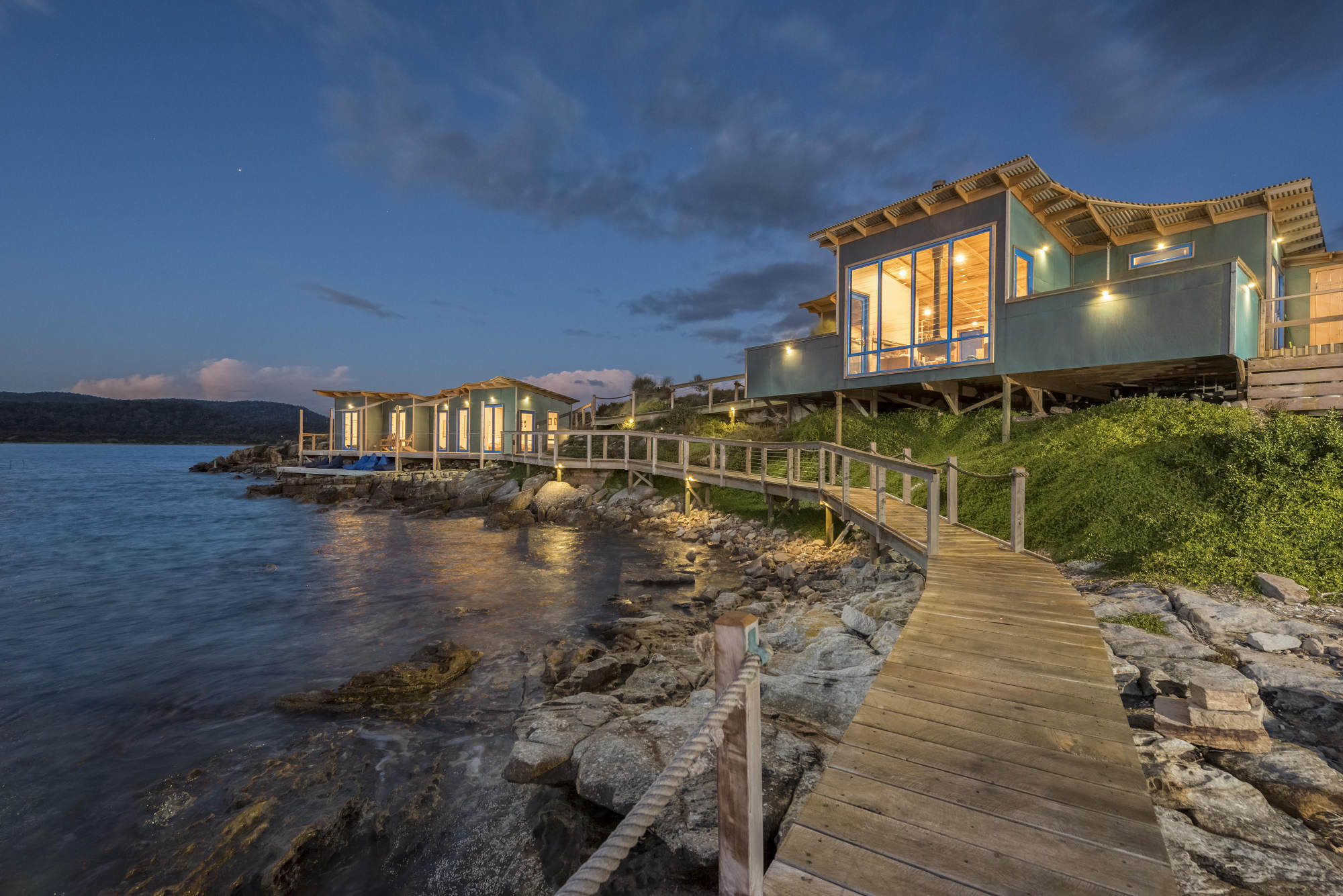
6. Picnic Island, Tasmania, Australia
Your own private island on the Freycinet Peninsula, on the eastern side of Tasmania, is the venue for a very special night sky observing and photography trip. It’s hosted by astrophotographer Aaron Jones, who provides private tuition to anyone wanting to capture the night sky and, between April and September, sometimes the aurora australis (southern lights).
A private resort with five double rooms, Picnic Island is a special place, with the mighty Hazards mountain range on the southern horizon. It’s got a resident colony of penguins and the chance to see migrating whales (June-September), dolphins and seals.
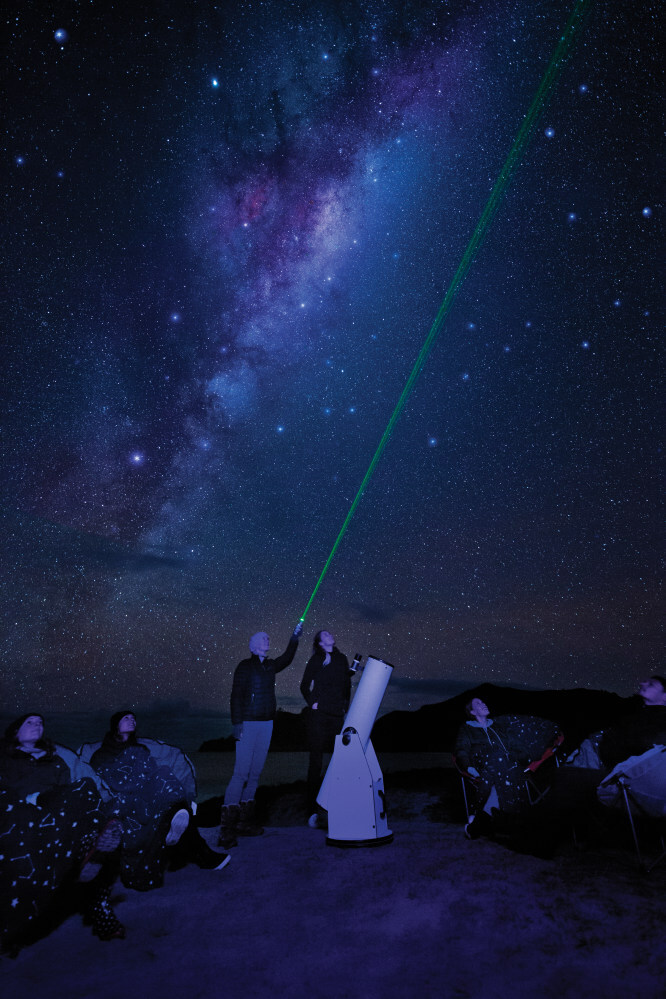
7. Aotea/Great Barrier Island Dark Sky Sanctuary, New Zealand
An International Dark Sky Sanctuary is a place that’s been certified as so dark at night that the Milky Way can cast a shadow. There are now 14 of them around the world, of which Aotea/Great Barrier Island, 100km (60 miles) northeast of Auckland, is easily the most accessible.
With no billboards or street lights, and only 1,000 inhabitants, there are some intriguing dark sky experiences on this off-grid island. The Good Heavens tour operator offers guided telescope viewing, while local astrophotographer Carol Comer puts together bespoke adventures. Access is by ferry or a short 30-minute flight from Auckland.
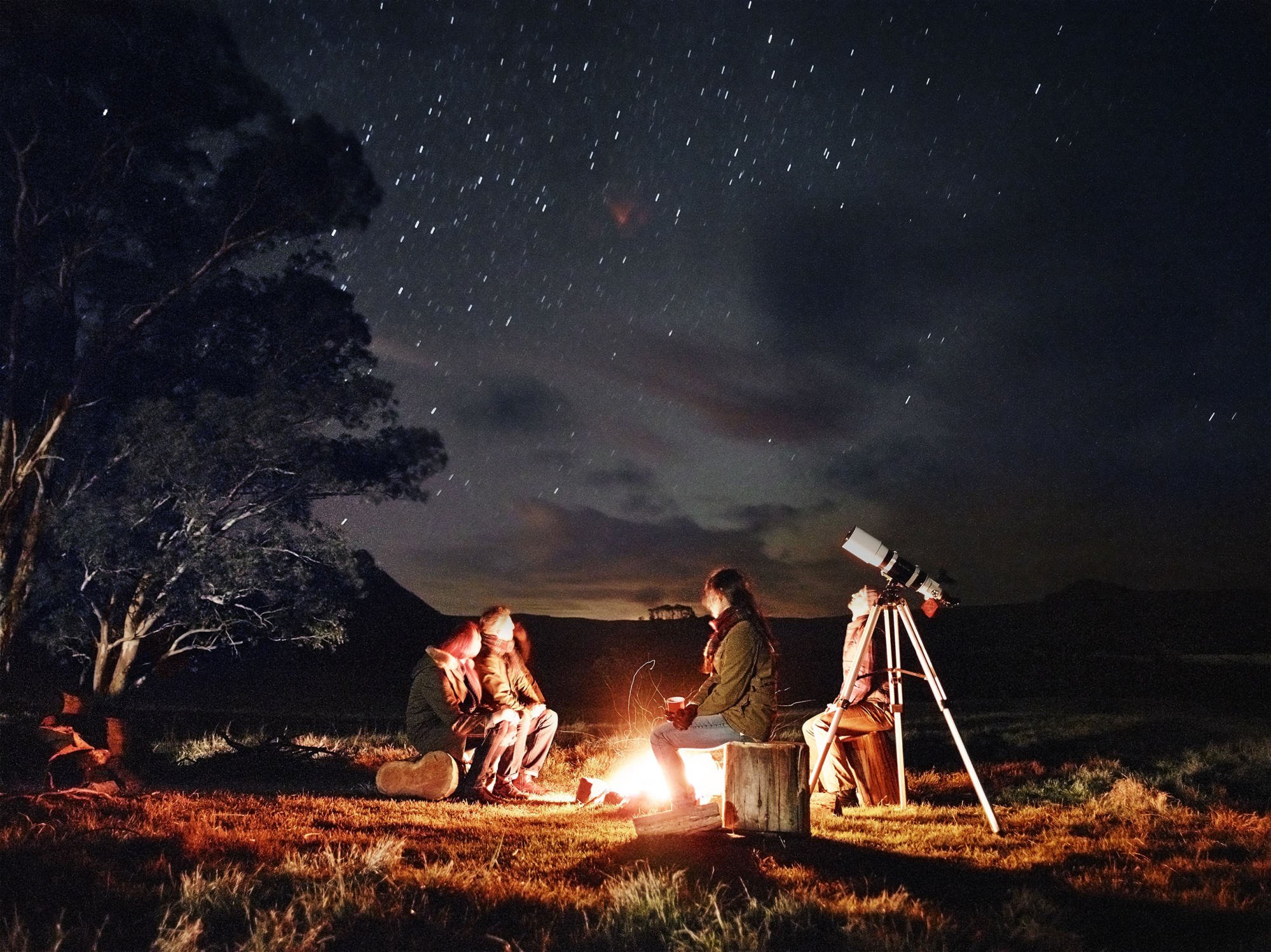
8. Emirates One&Only Wolgan Valley, Australia
Just a couple of hours drive from Sydney are the Blue Mountains, a region of eucalyptus forests whose postcard moment is the famous Three Sisters rock formation. However, get to the Emirates One&Only Wolgan Valley by four-wheel drive (the only option) and you’ll see the sparkling Seven Sisters star cluster up close and personal.
A Wilderness Campfire Stars on The Reserve Experience gives guests an introduction to Australia’s spectacular night sky through a combination of science, mythology and star lore amid a luxury Australian outback bush experience.
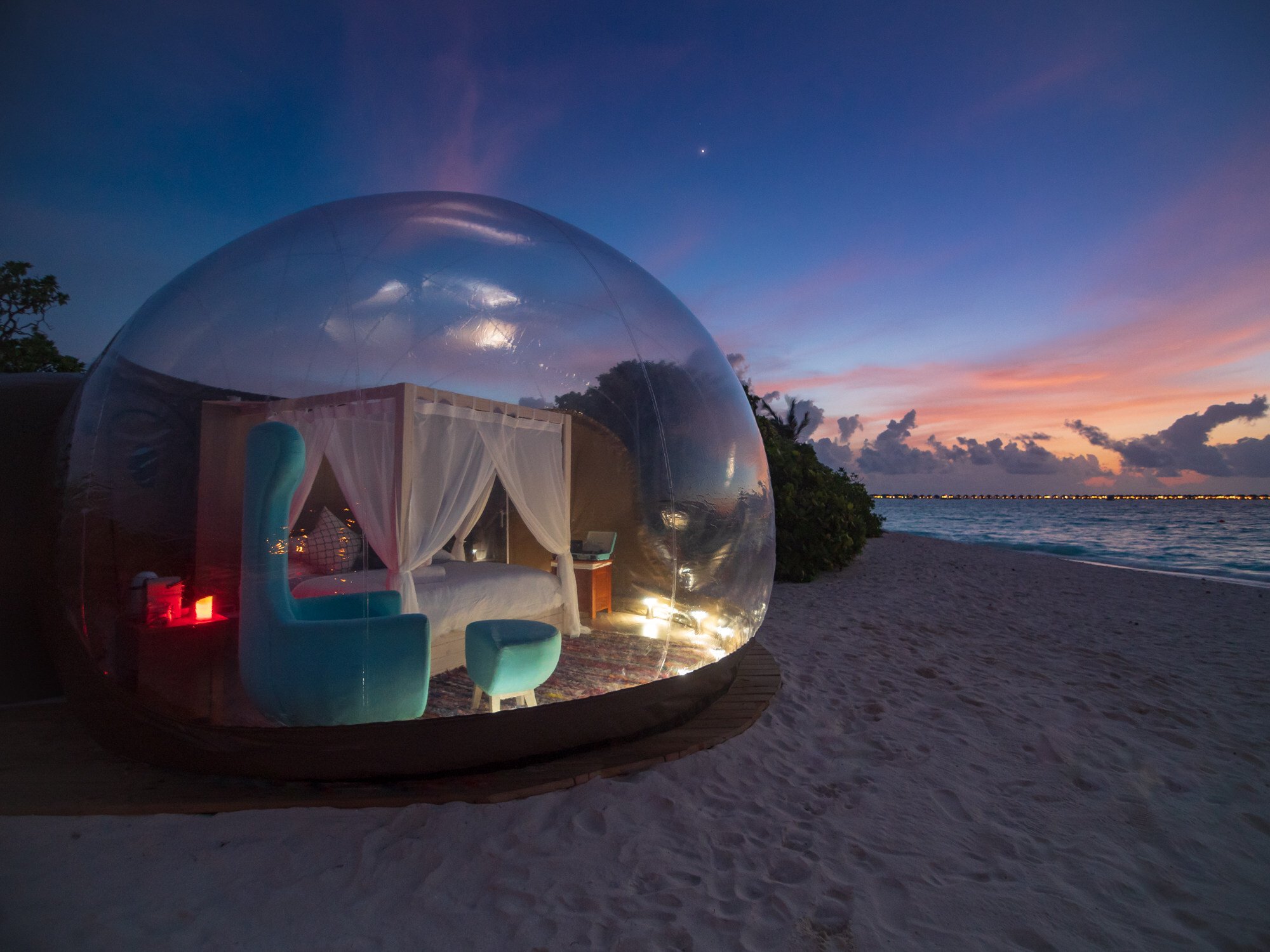
9. Seaside Finolhu Beach Bubble, Maldives
How about staying in a transparent “beach bubble” in the Maldives? The owners of Seaside Finolhu have built the ultimate getaway, the first of its kind, on a private sandbank surrounded by the ocean.
Guests at the main hotel can take an overnight stay that lasts from sunset until sunrise. The package includes a private chef who prepares a barbecue on the beach in the evening, followed by breakfast the next morning. The transparent dome is en suite and includes a telescope as well as a “bubble butler”.
Jamie Carter is the author of A Stargazing Program For Beginners: A Pocket Field Guide

